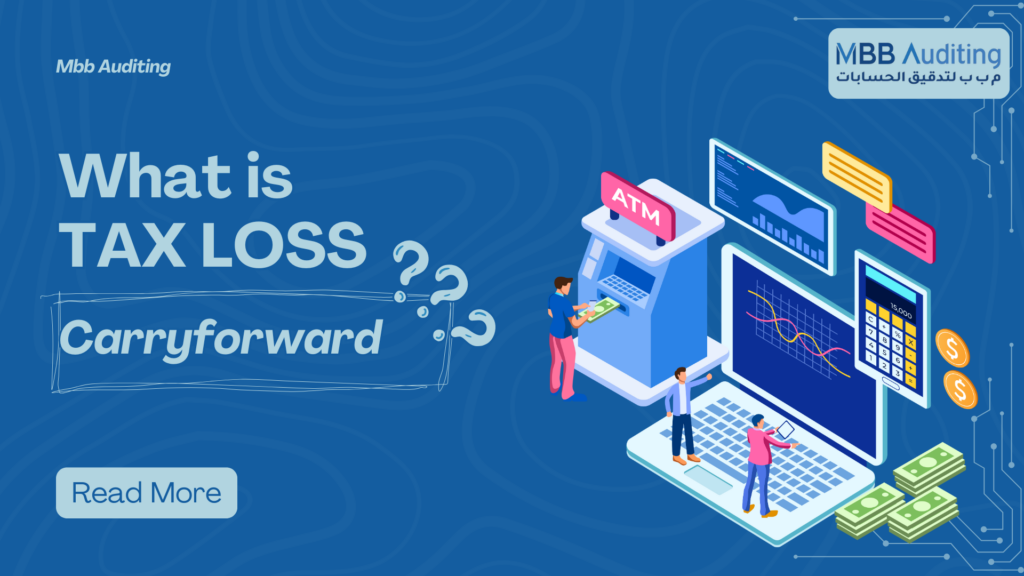
The UAE’s introduction of federal corporate tax in June 2023 marked a significant shift in its fiscal landscape. As businesses adapt to this new regime, understanding provisions like the tax loss carryforward rule becomes essential for optimizing tax positions. This blog breaks down the concept, eligibility criteria, calculations, and key considerations to help businesses navigate this tool effectively.
What is Tax Loss Carryforward?
Tax loss carryforward allows businesses to offset taxable losses incurred in a financial year against future taxable profits, reducing their tax liability in profitable years. For example, if a company faces a loss of AED 500,000 in 2023, it can apply this loss to reduce taxable income in 2024 or beyond. Unlike some jurisdictions, the UAE permits indefinite carryforward of losses, offering long-term flexibility—but with specific conditions.
Eligibility Criteria for Tax Loss Carryforward
Not all losses qualify for carryforward. Key eligibility requirements include:
- Tax Compliance: The business must file timely tax returns and maintain accurate records as per Federal Tax Authority (FTA) guidelines.
- Ownership Continuity: Significant changes in ownership (generally >50% shareholding) or business activity may disqualify carried-forward losses. This prevents “loss trading” for tax avoidance.
- Taxable Losses: Only losses calculated under UAE corporate tax law—not accounting losses—are eligible. Adjustments for non-taxable income or disallowed expenses may apply.
Calculating Tax Loss Carryforward
While the UAE allows indefinite carryforward, there are strategic nuances:
- Offset Limits: Businesses can offset tax losses up to 75% of the taxable income of the tax period in which the loss is being offset.
- For instance, if a company earns AED 1 million in taxable profit, it can offset carryforward tax losses up to AED 750,000 (75%)
- Group Considerations: Tax groups (entities with 95%+ common ownership) may consolidate losses, but carryforward applies post-consolidation.
Documentation Requirements for Tax Loss Carryforward
To substantiate losses, businesses must maintain:
- Audited financial statements.
- Detailed tax returns and supporting schedules.
- Records of ownership structure and business activities to demonstrate eligibility.
- The FTA may request these documents during audits, emphasizing the need for meticulous record-keeping.
Key Considerations for Businesses
- No Carryback: Losses cannot be applied to prior years’ profits.
- Anti-Abuse Rules: The FTA scrutinizes transactions designed artificially to create losses.
- Free Zone Implications: Free zone entities with 0% tax on qualifying income may only apply losses against mainland or non-qualifying income.
- Timing: Losses incurred before June 2023 (pre-CT effective date) are ineligible.
Strategic Takeaways
- Tax loss carryforward is a powerful tool for businesses to manage cash flow and long-term tax liability. To leverage it effectively:
- Plan ownership changes carefully to avoid disqualification.
- Align accounting practices with tax regulations to accurately compute taxable losses.
- Consult tax professionals to navigate complexities and ensure compliance.
- Tax loss carryforward is a powerful tool for businesses to manage cash flow and long-term tax liability. To leverage it effectively:
- Plan ownership changes carefully to avoid disqualification.
- Align accounting practices with tax regulations to accurately compute taxable losses.
- Consult tax professionals to navigate complexities and ensure compliance.
Conclusion
The UAE’s tax loss carryforward rule reflects a balanced approach—encouraging business resilience while safeguarding against misuse. By understanding eligibility, calculations, and documentation, companies can turn temporary setbacks into future tax advantages. As the corporate tax landscape evolves, staying informed and proactive will be key to maximizing fiscal health in the UAE’s dynamic economy.

